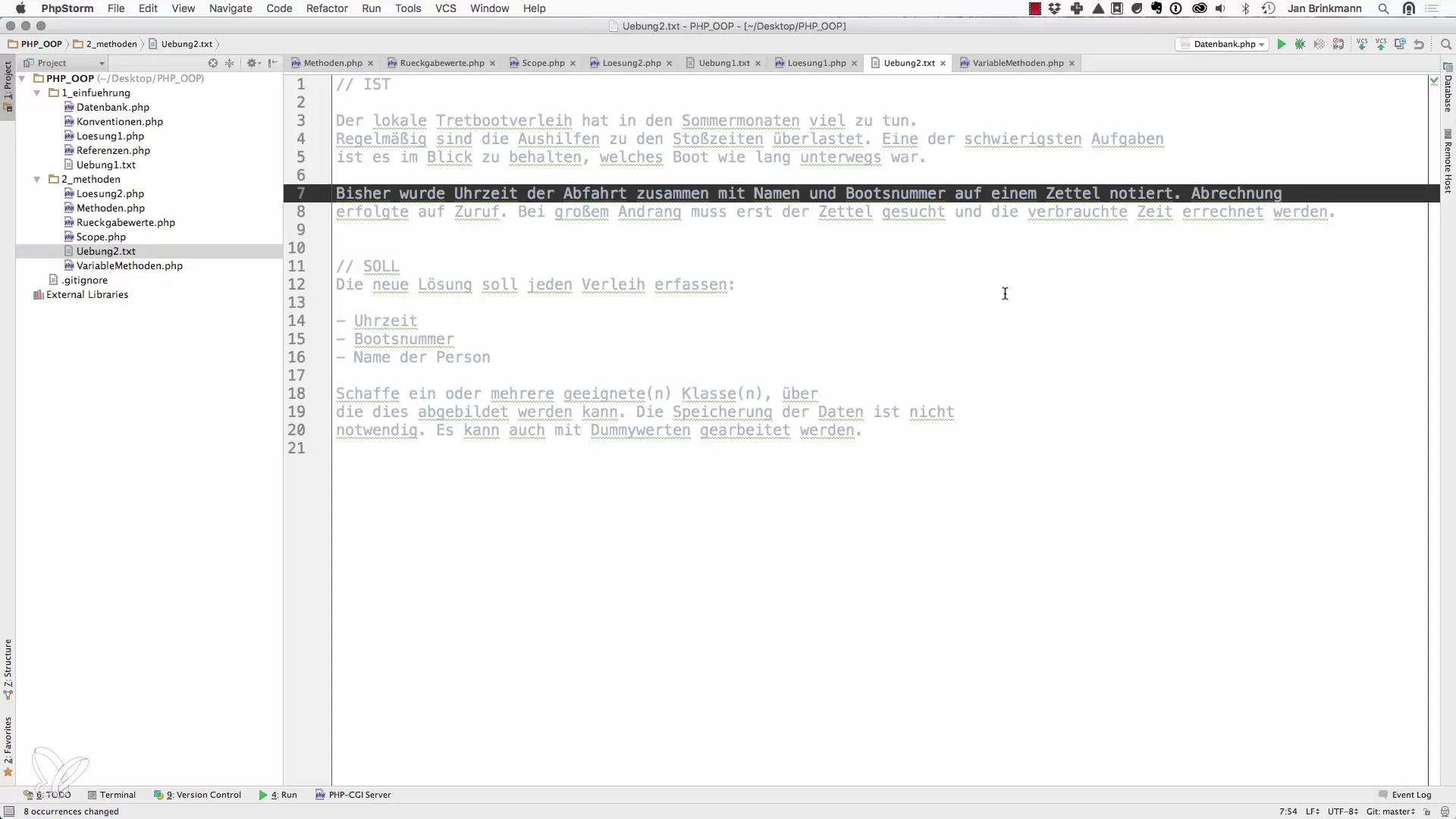In the course of this exercise, you will focus on developing a program that supports a pedal boat rental. The task is to optimize the processes in the rental and ensure that all relevant information regarding the boat rentals is captured digitally. For example, we will handle the recording of rental times and boat names. Ultimately, you want to ensure that the billing for boat rentals can be carried out more quickly and effectively.
Key insights
- Correct recording of all rental units.
- Use of methods for functionality expansion.
- Understanding of dummy values for simple output.
The Step-by-Step Guide
Step 1: Understand and outline requirements
Before you start programming, take the time to understand the requirements of your program in detail. You should be aware of the processes in the pedal boat rental: What information is necessary? What steps must be taken to record and terminate a rental? Start with a sketch of your ideas.

Step 2: Define class structure
In the next step, create a class that represents the pedal boat rental system. Think about what properties and methods this class should have. Properties could include information about boat names and rental times. Methods are responsible for functionality, such as recording a rental or terminating a rental.
Step 3: Implement methods
Now it is time to implement the previously defined methods. Start with the method for recording a new rental. This method should take parameters such as boat number, rental time, and possibly other relevant information. Consider how to ensure that the inputs are correct and complete.
Step 4: Provide dummy values
A central aspect of the project is working with dummy values. You do not want to equip the entire system with a database connection immediately but rather test the basic processes using an example first. Implement dummy values to simulate that a boat is being rented out. This could be done, for example, by returning a boolean value that signals that the recording was successful.
Step 5: End rental
Finally, implement the method that handles ending a rental. This method should not only capture the return of the boat but also calculate the total rental time. Here, you can use the already collected information to determine how long the boat was rented out.
Step 6: Output of data
Since the task does not require a database connection or a dynamic user interface to be implemented, you can focus on the static output of the collected information. Consider how the results should be displayed in the terminal or browser. Use simple print or echo commands to present the results.
Summary – Object-Oriented Web Programming with PHP: Capturing Rental Units
In summary, you have developed a program in this exercise that allows for the effective management of pedal boat rental processes. You have learned how to design a class structure, implement methods, and use dummy values to simplify programming. With this foundation, you can further deepen and improve your knowledge of object-oriented programming with PHP.
Frequently Asked Questions
What are dummy values?Dummy values are placeholders used in programming to simulate how the program would interact with real data.
Why do we use static outputs?Static outputs make sense to demonstrate the basic processes before adding complexity through database connections.
How important are methods in object-oriented programming?Methods are crucial as they define functions that operate on the objects of the classes, thus contributing to the structuring of your code.
Can I later make the application dynamic?Yes, you can always extend the application and integrate database systems to make the application more dynamic.


